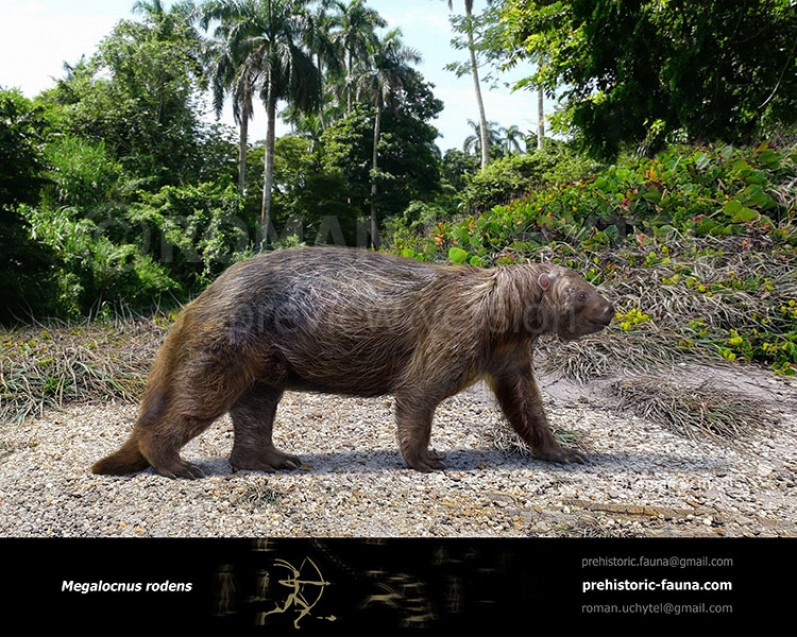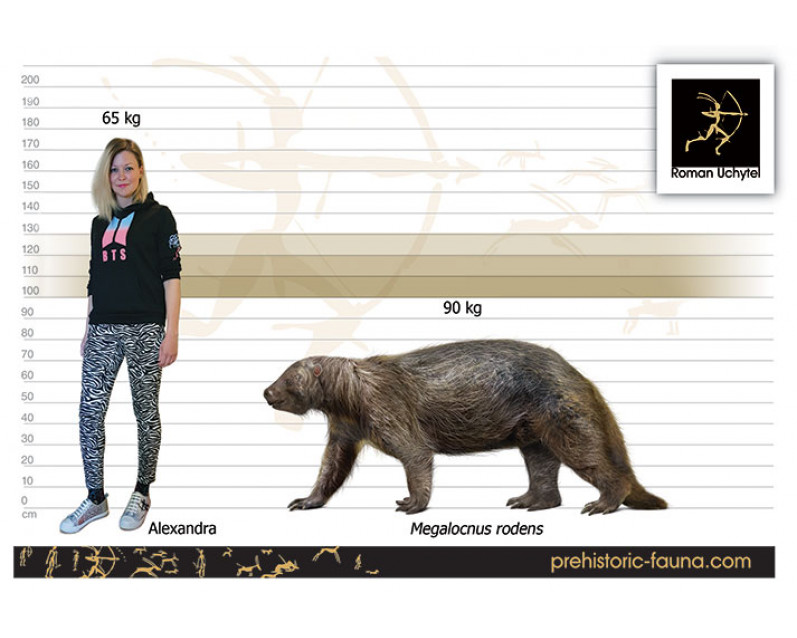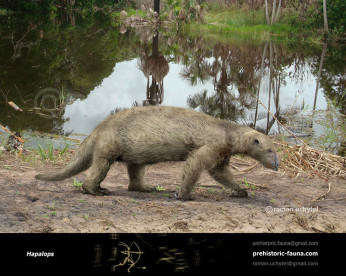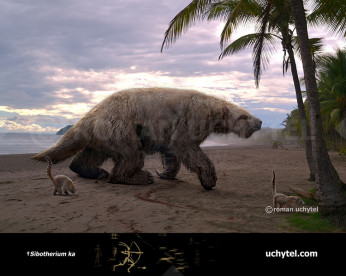Megalocnus
476476
Megalocnus (†Megalocnus rodens (Leidy, 1868))
Order: Pilosa
Family: †Megalocnidae
Temporal range: during the Pleistocene - Holocene (Cuba)
Dimensions: length - 2,3 m, weight - 90 kg
The ground sloths of the extinct genus Megalocnus ("great sloth") were among the largest of the Caribbean ground sloths, with individuals estimated to have weighed up to 90 kg when alive. Two species have been described, M. rodens of Cuba, and M. zile of Hispaniola.
Subfossils of M. rodens indicate survival well into the Holocene. The most recent AMS radiocarbon date reported is 4190 BP, calibrated to c. 4700 BP. This is similar to the most recent date reported for a Hispaniolan sloth, 4391 BP, calibrated to c. 5000 BP, for the small and probably semiarboreal Neocnus comes, and some 1,200 years after the earliest known date for human occupation of Cuba, 5140 BP, calibrated to c. 5900 BP
Payment
You may use multiple payment methods to buy image such as credit cards, PayPal and bank transfer.
Megalocnus (†Megalocnus rodens (Leidy, 1868))
Order: Pilosa
Family: †Megalocnidae
Temporal range: during the Pleistocene - Holocene (Cuba)
Dimensions: length - 2,3 m, weight - 90 kg
The ground sloths of the extinct genus Megalocnus ("great sloth") were among the largest of the Caribbean ground sloths, with individuals estimated to have weighed up to 90 kg when alive. Two species have been described, M. rodens of Cuba, and M. zile of Hispaniola.
Subfossils of M. rodens indicate survival well into the Holocene. The most recent AMS radiocarbon date reported is 4190 BP, calibrated to c. 4700 BP. This is similar to the most recent date reported for a Hispaniolan sloth, 4391 BP, calibrated to c. 5000 BP, for the small and probably semiarboreal Neocnus comes, and some 1,200 years after the earliest known date for human occupation of Cuba, 5140 BP, calibrated to c. 5900 BP


2-797x638.jpg)


2-70x56.jpg)


